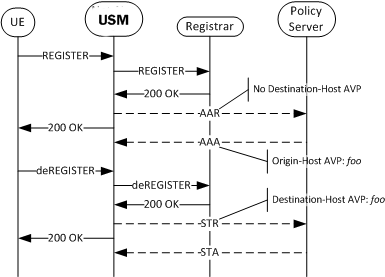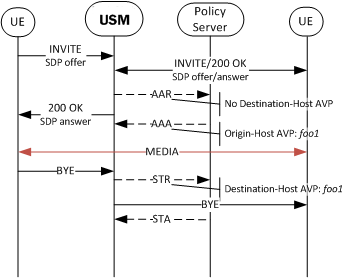Diameter Multi-tiered Policy Server Support
When accepting a call in a 2 tiered policy server environment, theOracle Communications Session Border Controller queries the Tier-1 policy server, running in stateless mode, for AAR-type requests. The Tier-1 PS, identifies an appropriate Tier-2 policy server for every incoming Diameter session. The mapping of session-ID to Tier-2 PS is performed between the Tier-1 and Tier-2 policy servers. This architecture is used to increase overall performance.
Two-tiered policy support is implemented per user registration and per call. To act in the P-CSCF role with a stateless Tier-1 policy server, the system recalls the Origin-Host AVP value returned in the AAA answer response to the initial Diameter AAR request. The Origin-Host-AVP value is then inserted into the Destination- Host AVP in subsequent Diameter messages (AAR, STR) corresponding to that user registration or call. Set the cache-dest-host parameter to enabled in the ext-policyserver configuration element to enable this feature.
The following call flow is an example two tiered PS support for user registration. While the initial AAR’s Destination-Host AVP is empty, the system inserts the value of the received Origin-Host AVP into the registration-terminating STR.

The following call flow is an example of a two tiered PS support for a call. If this call occurs within the scope of the previous registration, the value inserted into the Destination-Host AVP will still be unique per session. Therefore, it is not the value learned from the AAA in the REGISTER, previously illustrated; it is the value learned from the AAA responding to the INVITE setting up the call.

In the case of a reINVITE changing an aspect of the call like the codec use, foo1 is inserted into the AAR’s Destination-Host AVP. If the Origin-Host AVP value, as received by the system, changes mid session for a call, all subsequent Destination-Host AVP values are updated with the change.